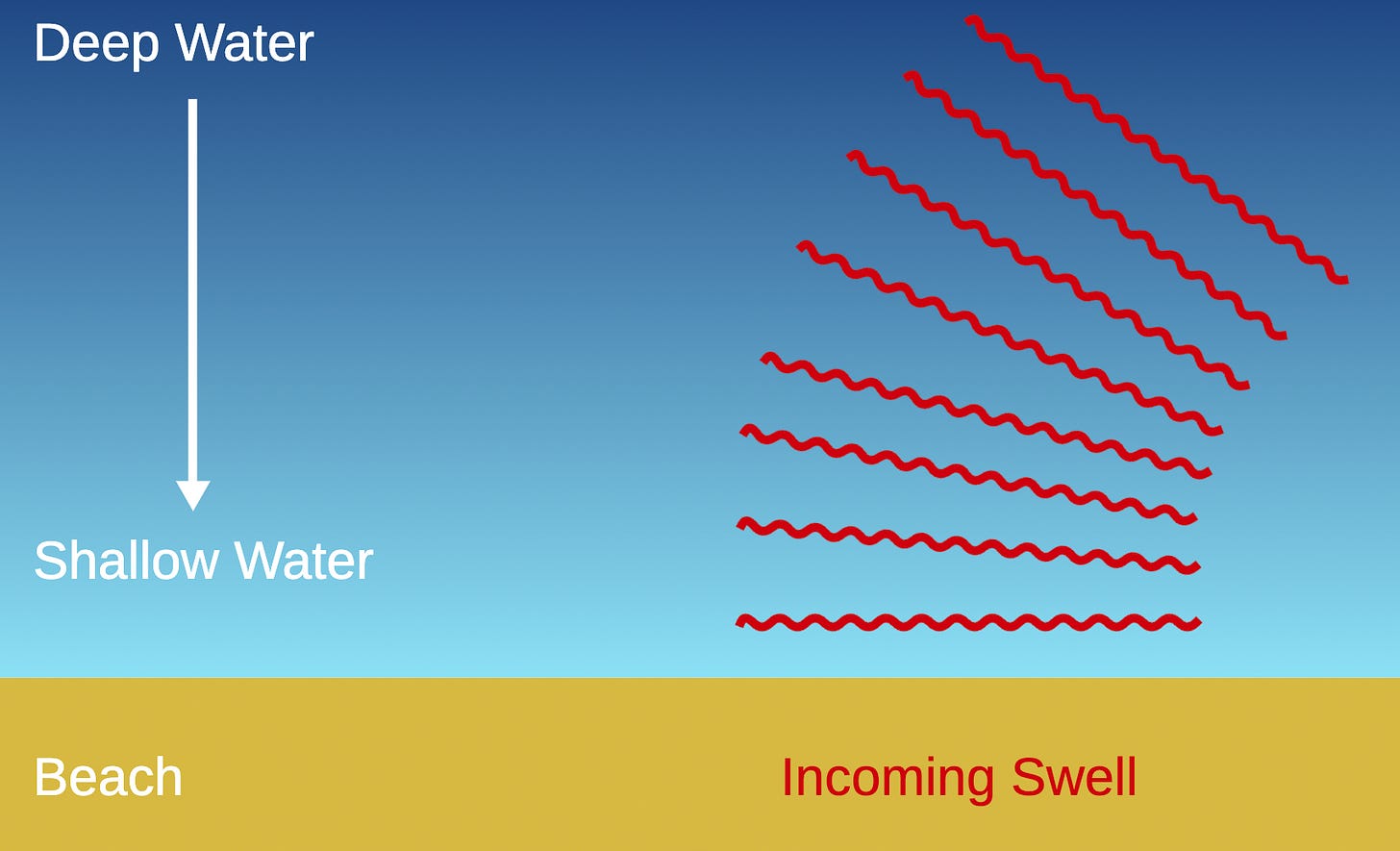Why do waves break (mostly) parallel to the coast?
Ever noticed how waves seem to wrap around headlands or curve as they approach the shore? This phenomenon, known as wave refraction, plays a crucial role in shaping the waves we surf.
Refraction occurs when waves enter shallower water and slow down. This process follows the dispersion relation, which describes how wave speed relates to wavelength and water depth. Basically, shorter wavelengths (the distance from peak to peak) and shallower water means slower waves.
For most surfable waves, we can think of them as shallow water waves, especially as they approach the break. This approximation means that we don’t care much about the wavelength anymore, just the water depth.
Now, let’s imagine a wave approaching the beach at an angle. Parts of the wave hit shallower water before others, causing them to slow down first. This causes the wave to turn towards the shallow water. It's like pushing a shopping cart with a jammed left wheel – the cart veers left because the left wheel is spinning slower than the right.

As waves get closer to shore, they tend to break more parallel to the coast than their initial approach angle. By the time they're just tiny ripples on the sand, they're essentially parallel to the beach.
Refraction is particularly important in creating point breaks at headlands. As waves wrap around a point, they often concentrate their energy, creating well-formed, peeling waves that break at the point and continue down the coast. This focusing effect can transform an average swell at the beach break next door into a rather excellent day at the point.

The process also explains why long-period swells can penetrate into sheltered bays and coves that are protected from shorter-period wind waves. Long-period swells, with their greater wavelengths, interact with the seafloor in deeper water and begin refracting earlier, allowing them to bend more as they approach the shore.
Bathymetry, or the topography of the seafloor, plays a critical role in determining how waves refract. Underwater features like canyons, sandbars, and reefs can significantly influence wave behavior. Steep, narrow canyons can cause waves to refract away from them, potentially creating larger waves on either side.
But a deeper look at those canyons will have to wait until the next one.
Refraction is a vital part of understanding how swells make their way across oceans. Until many of the surf forecasting models moved to machine learning integrated approaches, predicting how waves would turn given an initial period and direction from an offshore buoy was the primary method for forecasting waves at the break. In my opinion, these older models yield a much better forecast, and are beautiful in their simplicity.
Further Reading:

